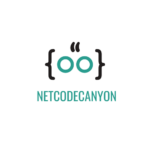In the ever-evolving realm of technology, software development models play a pivotal role in shaping how applications are crafted and delivered. These models provide structured methodologies that guide developers from conception to deployment, ensuring efficiency and quality. With technology advancing at a breakneck pace, understanding these models is crucial for anyone involved in software creation.
From the traditional Waterfall model to the flexible Agile approach, each software development model offers unique advantages tailored to different project needs. Selecting the right model can significantly impact a project’s success, influencing timelines, cost, and overall product quality. As organizations strive to innovate and adapt, exploring these models becomes essential to staying competitive.
Whether it’s a startup aiming for rapid development or an enterprise focusing on meticulous detail, software development models offer the roadmap to achieving those goals. By delving into these methodologies, teams can harness their full potential, ensuring robust and user-friendly software solutions.
Software Development Models
Software development models offer frameworks that guide teams through various project phases, including planning, design, development, testing, and deployment. Different models cater to distinct project needs.

- Waterfall Model
This linear approach involves sequential steps: requirements, design, implementation, verification, and maintenance. Best-suited for projects with well-defined requirements, it minimizes changes once a phase completes. - Agile Model
Agile, focusing on collaboration and flexibility, enables iterative development with regular feedback. It’s ideal for projects needing adaptability and incremental improvements. - DevOps Model
Combining development and operations, DevOps emphasizes continuous integration and delivery. Automated tools and collaborative approaches enhance deployment efficiency. - Spiral Model
Risk-driven, this model combines iterative and Waterfall aspects. It involves repeated cycles, making it suitable for complex, high-risk projects requiring frequent evaluations. - V-Model
The V-Model visualizes development stages as a “V” shape, linking development and testing. Each development step correlates with a testing phase, ensuring product quality.
Software development models impact timelines, costs, and quality. Choosing the right model aligns project demands with methodology strengths, guiding successful software creation.
Choosing The Right Model
Selecting the appropriate software development model can profoundly influence a project’s success. Evaluating distinct factors ensures the best fit for specific project needs.
Factors To Consider

Project Requirements: Methodologies like Waterfall suit projects with clear, stable requirements, while Agile favors evolving needs.
Team Expertise: Experienced teams may excel with Agile’s adaptive approach, whereas those new to software development might benefit from Waterfall’s structured progression.
Budget and Timeline: Time-sensitive projects might leverage Agile’s iterative delivery; Waterfall, however, offers predictability in budgeting.
Risk Management: Spiral models cater to high-risk projects through iterative risk analysis and mitigation at each development phase.
Client Involvement: Clients willing to provide ongoing feedback may prefer Agile, while minimal interaction aligns more with Waterfall.
Comparison Of Different Models
Software development models vary in approach and suitability for different projects. Each model’s unique characteristics determine its strengths and limitations.
Suitability For Projects

Software projects differ based on goals and requirement stability. The Waterfall model suits projects with clear objectives and stable requirements due to its linear approach. Agile works best in dynamic environments where requirements change frequently, making it popular for software that needs regular updates. The Spiral model fits projects with high-risk profiles and complex objectives, offering iterative development blended with risk assessment. The V-Model’s stringent validation aligns with projects needing rigorous testing and documentation, such as those in healthcare or aerospace. Lean Development suits startups focusing on efficiency and resource optimization.
Flexibility And Scalability
Flexibility and scalability vary across models. Agile and DevOps offer high flexibility, adapting to changes quickly and promoting iterative improvements. They scale well with evolving requirements and larger teams. The Waterfall model lacks flexibility due to its sequential phases, making changes more complicated. The V-Model offers moderate flexibility with aligned validation but poses challenges in scaling. Lean Development is flexible in minimizing waste and can scale as project demands grow or shrink, emphasizing value delivery.
Optimizing Processes

Understanding the various software development models is essential for navigating the complex landscape of technology projects. Each model offers unique benefits and challenges, making it crucial for organizations to assess their specific needs and constraints. By aligning the chosen methodology with project goals, teams can enhance efficiency, manage risks effectively, and deliver high-quality software solutions. Whether it’s the structured approach of Waterfall, the adaptability of Agile, or the collaborative spirit of DevOps, selecting the right model can significantly influence the success of any software development endeavor.

